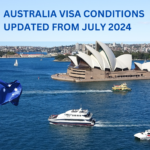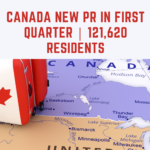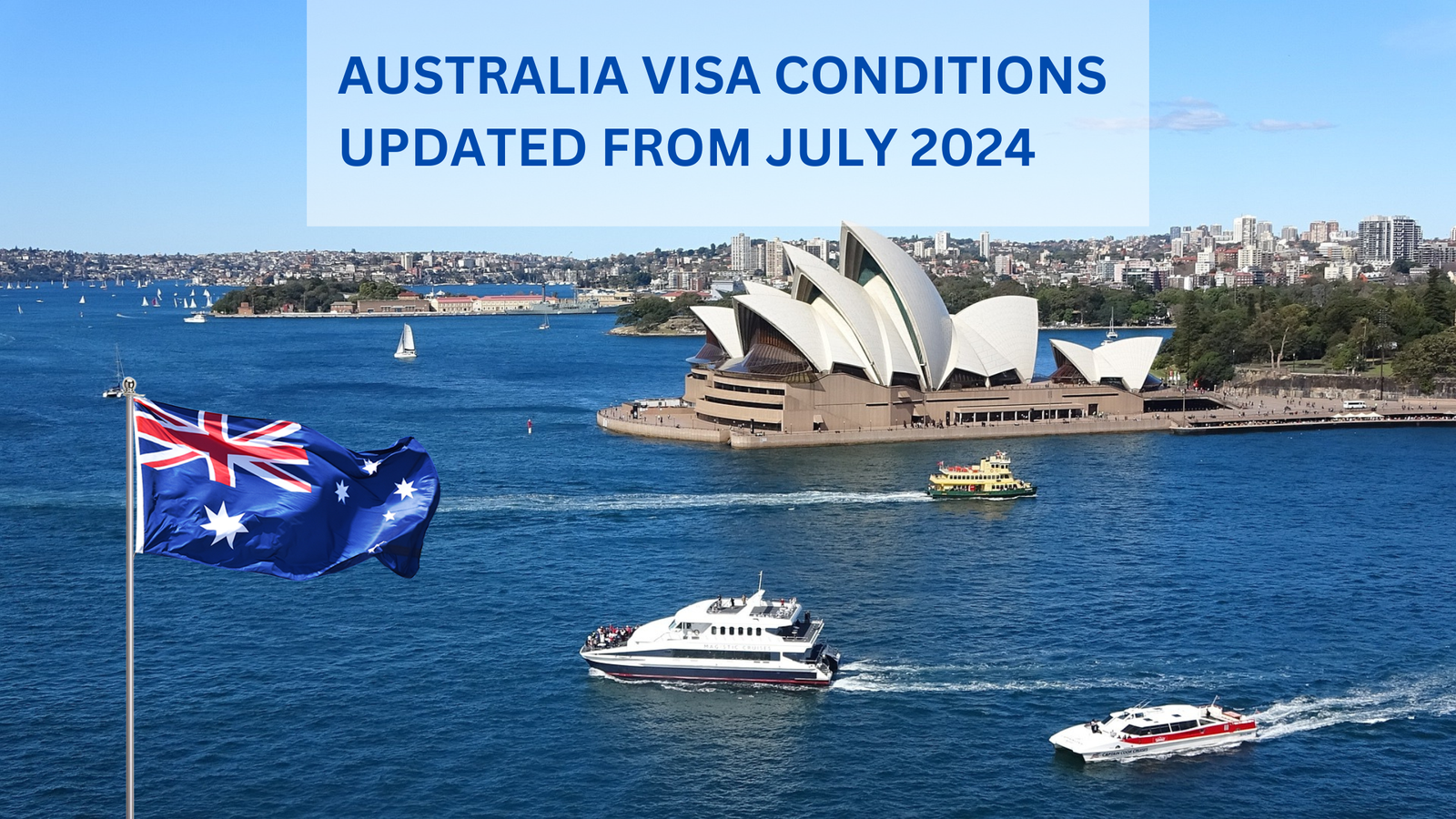121,620 new permanent residents arrived in Canada in the first quarter of 2024; 52,720 of them settled in Ontario and 17,745 in British Columbia. Although it’s early in the year, these figures represent a significant decrease from the 145,495 new permanent residents recorded in the first quarter of 2023. This trend suggests a cooling in Canada new PR in first quarter compared to the same period last year. However, it’s worth noting that these numbers are still higher than those recorded in the first quarter of 2022, when Canada welcomed 113,805 new permanent residents. This indicates a general upward trend in Canada new PR in first quarter, albeit with fluctuations.
Yearly Comparison of Canada new PR in first Quarter Admissions
| Year | New PRs (Q1) | Annual Immigration Targets |
| 2024 | 121,620 | 485,000 |
| 2023 | 145,495 | 465,000 |
| 2022 | 113,805 | 431,645 |
| 2021 | 70,495 | 401,000 |
| 2020 | 69,140 | 341,000 |
| 2019 | 65,955 | 330,800 |
| 2018 | 80,005 | 310,000 |
| 2017 | 72,835 | 300,000 |
| 2016 | 86,235 | 300,000 |
| 2015 | 51,125 | 260,000 to 285,000 |
These figures highlight the varying trends in Canada’s immigration policies and the actual intake of new permanent residents over the past decade. The significant rise in immigration targets from 2015 to 2024 underscores Canada’s commitment to welcoming more immigrants to support its economic and demographic growth.
New PR Admissions and Annual Immigration Levels
From January to March 2024, Canada issued a total of 135,291 authorizations and visas for permanent residency. This number is down from the 156,272 issued during the same period in 2023. Despite the overall decrease, the Express Entry system, the largest federal economic category of immigration, saw 36,635 new permanent residents, which is a 6% increase from the 34,555 admissions in the first quarter of 2023. This increase highlights the continued effectiveness and popularity of the Express Entry system in attracting skilled immigrants. The success of the Express Entry system underscores the positive trend in Canada New PR In First Quarter statistics, demonstrating its crucial role in driving immigration numbers. The data reaffirms the importance of Canada New PR In First Quarter as a key indicator of immigration trends.
Province-Wise Distribution of New PRs in Q1 2024
Ontario, the most populous province in Canada, remained the top destination for new permanent residents, welcoming 52,720 newcomers, which accounts for approximately 44% of all new PRs in the country. Conversely, Manitoba, Newfoundland and Labrador, British Columbia, and Saskatchewan saw the largest declines in new PR admissions. The Canada new PR in first quarter data highlights Ontario’s significant appeal to newcomers, while the other provinces experienced noticeable decreases. This trend in Canada new PR in first quarter statistics underscores the varying regional preferences and economic opportunities across the country.
| Province | New PRs (Q1 2024) | New PRs (Q1 2023) | Percentage Change |
| Canada | 121,620 | 145,495 | -16.41% |
| Ontario | 52,720 | 60,860 | -13.37% |
| British Columbia | 17,745 | 24,495 | -27.56% |
| Alberta | 15,360 | 17,155 | -10.46% |
| Quebec | 13,355 | 16,065 | -16.87% |
| Manitoba | 5,680 | 8,855 | -35.85% |
| Saskatchewan | 5,610 | 7,395 | -24.13% |
| New Brunswick | 3,995 | 2,940 | +35.88% |
| Nova Scotia | 3,995 | 3,935 | +1.52% |
| Newfoundland and Labrador | 1,405 | 2,045 | -31.30% |
| Prince Edward Island | 1,330 | 1,275 | +4.31% |
| Yukon | 295 | 345 | -14.49% |
| Northwest Territories | 115 | 125 | -8% |
| Nunavut | 10 | 10 | Unchanged |
These provincial figures illustrate the diverse regional preferences of new immigrants and highlight the varying capacity and appeal of different provinces.
Transition from Temporary to Permanent Residency
An essential aspect of Canada’s immigration strategy is facilitating the shift from temporary to permanent status. In the first quarter of 2024, the number of temporary residents transitioning to permanent residence decreased by 24.82% to 7,180, particularly among those who previously held study permits. Additionally, 21,190 temporary residents with Post-graduate Work Permits (PGWPs) made the transition to permanent residency, marking a 17.90% decline compared to the first quarter of 2023. This shift significantly impacts Canada’s demographics and labor force, particularly in the context of Canada New PR In First Quarter.
| Temporary Resident Status | Q1 2024 | Q1 2023 | Percentage Decline |
| New PRs with Previous IMP Work Permit Status | 45,565 | 54,830 | -16.90% |
| New PRs with Previous Post-graduate Work Permit Status | 21,190 | 25,810 | -17.90% |
| New PRs with Previous Study Permit Status | 7,180 | 9,550 | -24.82% |
| New PRs with Previous Temporary Foreign Worker Program Status | 3,710 | 4,140 | -10.39% |
The decline in the transition from temporary to permanent residency in Canada New PR In First Quarter may be due to several factors, including changes in immigration policies, economic conditions, or the ongoing effects of the global pandemic on migration patterns. The reduced number of study permit holders moving to permanent residency might suggest a more competitive or restrictive environment for international students seeking to remain in Canada after completing their studies.
Top Source Countries for New Permanent Residents
In the first quarter of 2024, India remained at the forefront as the primary source country for new permanent residents in Canada, accounting for 31% of the total newcomers. Alongside India, China, the Philippines, Afghanistan, and Nigeria also emerged as significant contributors to Canada’s immigrant population. These top five source countries collectively shaped the demographic landscape of Canada’s New PR In First Quarter, reflecting the nation’s diverse and inclusive immigration policies.
| Country | New PRs (Q1 2024) |
| India | 37,880 |
| China | 8,135 |
| Philippines | 7,990 |
| Afghanistan | 5,025 |
| Nigeria | 4,690 |
| Cameroon | 3,725 |
| Iran | 3,570 |
| Pakistan | 2,630 |
| United States | 2,480 |
| Eritrea | 2,360 |
India’s significant contribution to Canada’s immigration numbers highlights the strong ties between the two countries and the attractiveness of Canada as a destination for Indian immigrants. The presence of countries like China, the Philippines, and Nigeria in the top five also reflects Canada’s diverse immigration intake.
Canada’s Annual Immigration Targets
In the first quarter of 2024, Canada New PR In First Quarter has set ambitious immigration targets for the coming years. In 2024, the country aims to welcome 485,000 new immigrants, with plans to stabilize at 500,000 annual admissions for 2025 and 2026. These targets are integral to Canada’s broader strategy to address demographic challenges, labor market needs, and spur economic growth through immigration. Canada New PR In First Quarter is a key focus in achieving these goals.
Detailed Category-Wise Annual Immigration Levels Plan
Canada’s immigration targets are broken down into various categories, each designed to meet specific economic and social goals. These categories include:
- Economic Class: This category includes programs like Express Entry, Provincial Nominee Programs (PNPs), and the Atlantic Immigration Program, focusing on attracting skilled workers who can contribute to the economy immediately.
- Family Class: This category aims to reunite families by allowing Canadian citizens and permanent residents to sponsor their spouses, children, parents, and grandparents.
- Refugees and Protected Persons: Canada has a long-standing commitment to providing refuge to those in need. This category includes government-assisted refugees, privately sponsored refugees, and protected persons in Canada.
- Humanitarian and Compassionate Grounds: This category covers individuals who would not normally be eligible for permanent residence in Canada but are granted the status for humanitarian and compassionate reasons.
Focus on Express Entry System
The Express Entry system remains the linchpin of Canada’s economic immigration strategy, facilitating the admission of 36,635 new permanent residents in the first quarter of 2024. This marks a 6% uptick from the previous year. Express Entry administers applications for three key federal immigration streams: the Federal Skilled Worker Program, the Federal Skilled Trades Program, and the Canadian Experience Class. Candidates undergo assessment via the Comprehensive Ranking System (CRS), weighing factors like age, education, work experience, and language proficiency. The highest-ranking individuals are then invited to apply for permanent residence through routine draws.
Provincial Nominee Programs (PNPs)
Provincial Nominee Programs (PNPs) empower provinces and territories to nominate individuals fulfilling specific local labor market needs and economic priorities. Each region tailors its criteria and streams within the PNP framework. For instance, Ontario’s Immigrant Nominee Program (OINP) strategically targets highly skilled workers, international students, and entrepreneurs. In the first quarter of 2024, PNPs in several provinces witnessed notable activity, augmenting Canada’s New PR intake for the period. Ontario and British Columbia, notably, maintained their prominence in attracting fresh permanent residents through their respective PNPs.
Immigration’s Effects on Canada’s Economy and Society
Immigration has a huge influence on Canada’s economic and social growth, with new permanent residents arriving in the first quarter playing an important role. These immigrants enrich Canadian society with a diverse set of talents, experiences, and cultural viewpoints, increasing its vitality. Economically, their presence solves labour shortages, benefits the elderly population, and promotes innovation and entrepreneurship. The record number of Canada New PR In First Quarter underscores the practical advantages of immigration to both national economy and peace in communities.
Economic Contributions
- Labor Market: Immigrants fill critical gaps in the labor market, particularly in sectors like technology, healthcare, and engineering. By providing skilled labor, they support industries’ growth and competitiveness.
- Entrepreneurship: Many immigrants start their own businesses, creating jobs and fostering innovation. Immigrant entrepreneurs contribute significantly to the Canadian economy, particularly in urban centers.
- Demographic Support: With an aging population, Canada relies on immigration to maintain population growth and support the social welfare system. Immigrants help balance the demographic scale by bringing in younger populations.
Social Contributions
- Cultural Diversity: Immigration enhances Canada’s cultural diversity, making it a vibrant and dynamic society. Newcomers bring unique traditions, languages, and perspectives that contribute to the multicultural fabric of the nation.
- Community Building: Immigrants often become active members of their communities, participating in local events, volunteering, and contributing to community development.
Challenges and Future Directions
While Canada’s immigration framework demonstrates resilience, it encounters numerous challenges. Facilitating the seamless integration of newcomers into Canadian society remains paramount. This necessitates robust support systems encompassing language training, employment avenues, and social services. Ensuring newcomers can smoothly assimilate into Canadian life is pivotal to the nation’s cohesive growth. Adequate provisions for language training, employment opportunities, and social services are imperative to address this integration imperative amidst the influx of Canada New PR In First Quarter
Integration Programs
In facilitating the integration of new permanent residents (PRs) arriving in the first quarter of 2024, Canada offers an array of initiatives. These encompass settlement services, language training, and employment assistance, all geared toward easing newcomers’ transition into Canadian society. These comprehensive programs aim to empower individuals from the Canada New PR In First Quarter influx, aiding them in acclimating to their new surroundings, securing fitting employment opportunities, and actively participating in their local communities.
Policy Adjustments
As global migration patterns evolve, Canada must adapt its immigration policies to meet changing dynamics. This involves refining selection criteria, bolstering support services, and aligning immigration targets with the country’s economic and social priorities. The influx of Canada New PR In First Quarter underscores the urgency of these adjustments.
Conclusion
Canada’s commitment to welcome immigrants remains unwavering, and the country continues to attract new permanent citizens from throughout the world. Despite a modest dip in the first quarter of 2024 compared to the previous year, Canada remains a top destination for immigrants. With ambitious yearly immigration objectives and a strong focus on economic, familial, and humanitarian immigration, Canada is well positioned to reap the benefits of a thriving and diversified population. This welcome posture emphasises Canada’s long-standing attractiveness as an immigration destination, providing possibilities for anyone looking to establish themselves in a welcoming and inclusive community. As indicated by the patterns in the Canada New PR In First Quarter, Canada’s appeal to new permanent residents remains strong, demonstrating the country’s continuous commitment to maintaining a dynamic and multicultural community.
Explore additional resources for the latest updates on visa and immigration by clicking on this link.











